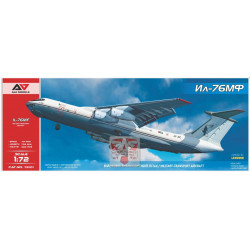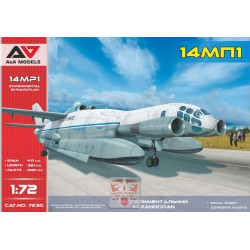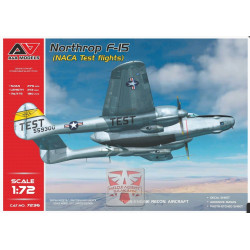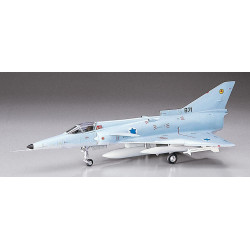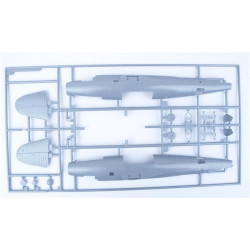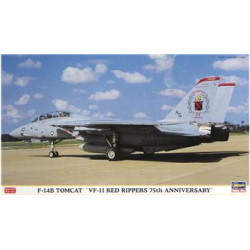F/A-18C Hornet "VFA-192 Golden Dragons 2007"
1/48 Aircrafts, Planes
Hasegawa 09799
Manufacturer: Hasegawa
Scale: 1/48
Material: Plastic
Paint: Unpainted, Unassembled, Kit do not contain paints and glue.
Condition: New in Box
F/A-18 Hornet is a twin-enginesupersonic, all-weather carrier-capable multirole combat jet, designed as both a fighter and attack aircraft (F/A designation for Fighter/Attack). Designed by McDonnell Douglas and Northrop, the F/A-18 was derived from the latter's YF-17 in the 1970s for use by the United States Navyand Marine Corps. The Hornet is also used by the air forces of several other nations. The U.S. Navy's Flight Demonstration Squadron, the Blue Angels has used the Hornet since 1986.
The F/A-18 has a top speed of Mach 1.8 (1,190 mph or 1,915 km/h at 40,000 ft or 12,190 m). It can carry a wide variety of bombs and missiles, including air-to-air and air-to-ground, supplemented by the 20 mm M61 Vulcan cannon. It is powered by two General Electric F404 turbofan engines, which give the aircraft a high thrust-to-weight ratio. The F/A-18 has excellent aerodynamic characteristics, primarily attributed to itsleading edge extensions (LEX). The fighter's primary missions arefighter escort, fleet air defense, Suppression of Enemy Air Defenses(SEAD), air interdiction, close air support and aerial reconnaissance. Its versatility and reliability have proven it to be a valuable carrier asset, though it has been criticized for its lack of range and payload compared to its earlier contemporaries, such as the Grumman F-14 Tomcat in the fighter and strike fighter role, and the Grumman A-6 Intruder and LTV A-7 Corsair II in the attack role.
The Hornet saw its first combat action in 1986 during Operation El Dorado Canyon and subsequently participated in 1991 Operation Desert Storm and 2003 Operation Iraqi Freedom. The F/A-18 Hornet provided the baseline design for the Boeing F/A-18E/F Super Hornet, a larger, evolutionary redesign of the F/A-18.The U.S. Navy started the Naval Fighter-Attack, Experimental (VFAX) program to procure a multirole aircraft to replace theDouglas A-4 Skyhawk, the A-7 Corsair II, and the remaining McDonnell Douglas F-4 Phantom IIs, and to complement the F-14 Tomcat. Vice Admiral Kent Lee, then head of Naval Air Systems Command (NAVAIR), was the lead advocate for the VFAX against strong opposition from many Navy officers, including Vice Admiral William D. Houser, deputy chief of naval operations for air warfare – the highest ranking naval aviator.Though the YF-16 won the LWF competition, the Navy was skeptical that an aircraft with one engine and narrow landing gear could be easily or economically adapted to carrier service, and refused to adopt an F-16 derivative. On 2 May 1975 the Navy announced its selection of the YF-17. Since the LWF did not share the design requirements of the VFAX, the Navy asked McDonnell Douglas and Northrop to develop a new aircraft from the design and principles of the YF-17. On 1 March 1977 Secretary of the Navy W. Graham Claytor announced that the F-18 would be named "Hornet".Northrop had partnered with McDonnell Douglas as a secondary contractor on NACF to capitalize on the latter's experience in building carrier aircraft, including the widely used F-4 Phantom II. On the F-18, the two companies agreed to evenly split component manufacturing, with McDonnell Douglas conducting final assembly. McDonnell Douglas would build the wings, stabilators, and forward fuselage; while Northrop would build the center and aft fuselage and vertical stabilizers. McDonnell Douglas was the prime contractor for the naval versions, and Northrop would be the prime contractor for the F-18L land-based version which Northrop hoped to sell on the export market.McDonnell increased fuel capacity by 4,460 pounds (2,020 kg), by enlarging the dorsal spine and adding a 96 gallon fuel tank to each wing. A "snag" was added to the wing's leading edge and stabilators to prevent a flutter discovered in the F-15 stabilator. The wings and stabilators were enlarged, the aft fuselage widened by 4 inches (102 mm), and the engines canted outward at the front. These changes added 10,000 lb (4,540 kg) to the gross weight, bringing it to 37,000 lb (16,800 kg). The YF-17's control system was replaced with a fully digital fly-by-wire system with quadruple-redundancy, the first to be installed in a production fighter.Northrop developed the F-18L as a potential export aircraft. Since it was not strengthened for carrier service, it was expected to be lighter and better performing, and a strong competitor to the F-16 Fighting Falcon then being offered to American allies. The F-18L's maximum gross weight was 7,700 pounds (3,490 kg) (approximately 30%) lighter than the F/A-18A, via lighter landing gear, lack of wing folding mechanism, reduced part thickness in areas, and lower fuel-carrying capacity. Though the aircraft retained a lightened arresting hook, the most obvious external difference was removed "snags" on the leading edge of the wings and stabilators. It still retained 71% commonality with the F/A-18 by parts weight, and 90% of the high-value systems, including the avionics, radar, and ECM suite, though alternatives were offered. Unlike the F/A-18, the F-18L carried no fuel in its wings and lacked weapons stations on the intakes. It had three underwing pylons on each side instead.The partnership between McDonnell Douglas and Northrop soured over competition for foreign sales for the two models. Northrop felt that McDonnell Douglas would put the F/A-18 in direct competition with the F-18L. In October 1979, Northrop filed a series of lawsuits charging that McDonnell was using Northrop technology developed for the F-18L for foreign sales in violation of their agreement, and asked for a moratorium on foreign sales of the Hornet via McDonnell Douglas. The case was resolved in 1985 when McDonnell agreed to pay Northrop $50 million for complete rights to the design, with no admission of wrongdoing. By then Northrop had ceased work on the F-18L, and most export orders were captured by the F-16 or the F/A-18.
F/A-18 Hornet
A U.S. Marine Corps F/A-18C in October 2003, flying over the South China Sea.
Role
Multirole fighter
National origin
United States
Manufacturer
McDonnell Douglas / Boeing
Northrop
First flight
18 November 1978
Introduction
7 January 1983
Status
In service
Primary users
United States Navy
United States Marine Corps
Royal Australian Air Force
See Operators below for others
| General Product Info | |
| Material | NOT SET |
| Scale | 1/48 |
| Type | NOT SET |
We have the lowest worldwide shipping. And it's totally simple.
EUROPE, USA, CANADA TURKEY, ISRAEL, EGYPT, UE CHINA, JAPAN, HK, S.KOREA | AU NZ MX South America, Asia | |
| Order weight up to 0.22kg or 0.48lb | US$ 8.90 | US$ 8.90 |
| Order weight up to 0.44kg or 0.97lb | US$ 13.95 | US$ 17.90 |
| Order weight over 0.44kg or 0.97lb | US$ 19.99 | US$ 29.99 |
| Order total over $150 | FREE | PROMO US$ 19.99 |
Shipping to some countries not qualifies for the free shipping option but costs not over $29.99 for any sized order. Sorry for that, your location is too far.
- Stock: Out Of Stock
- Model: HA09799
- Weight: 1.35lb
- DATE ADDED: 08/04/2014




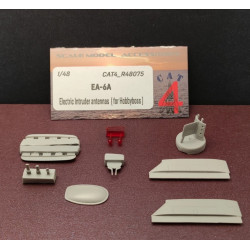


















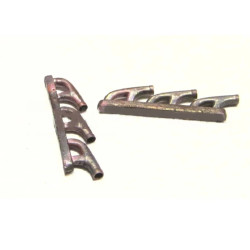










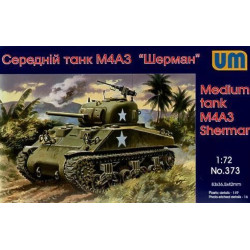









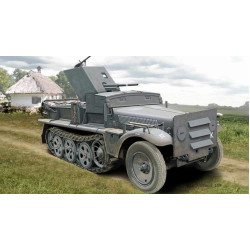





















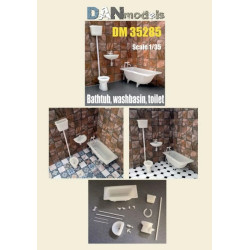










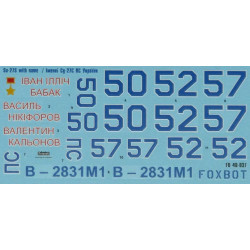







































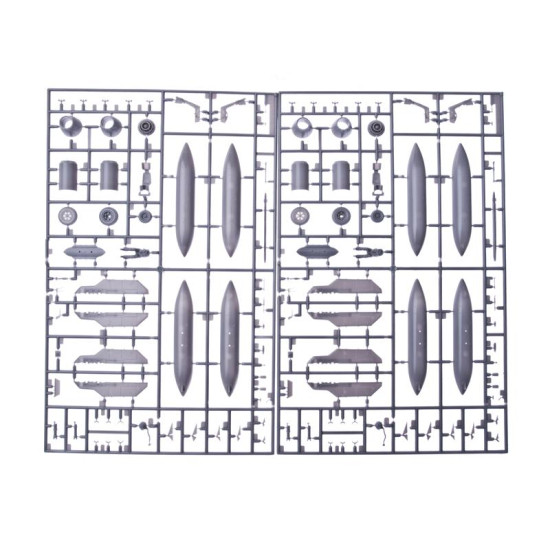

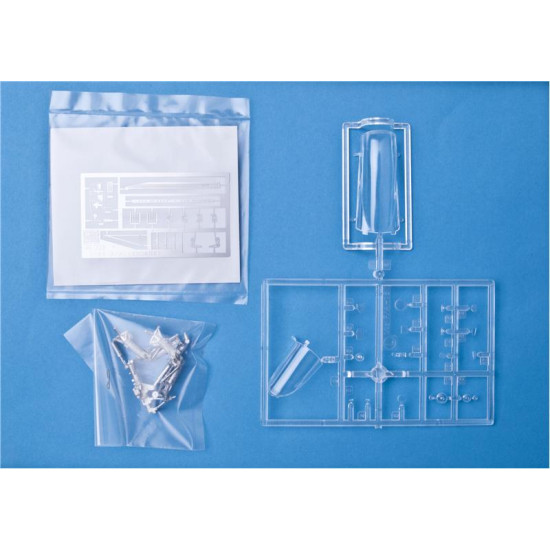









-250x250w.jpg)













